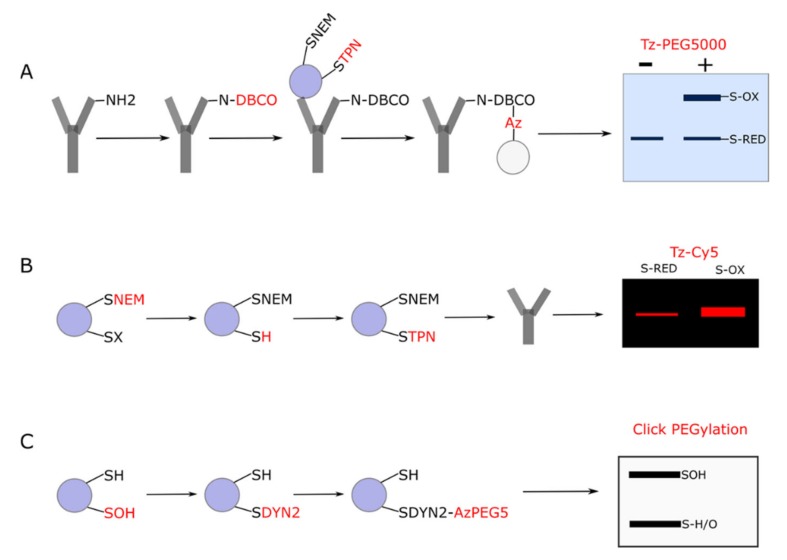Figure 6.
Novel, clickable immunological approaches to assess protein thiol redox state. (A). Antibody first Click PEGylation. Dibenzocyclooctyne (DBCO) functionalized N-hydroxysuccinimide is used to label NH2 moieties in the primary antibody. The DBCO labelled primary antibody is incubated with the sample to capture the TPN labelled target. Azide functionalized resin is used to capture the antibody-target complex via SPAAC. After stringently washing the captured complex via spin cups (omitted for clarity), the eluted target is reacted with Tz-PEG5 via IEDDA and mass shifts are visualized in gel via Coomassie staining. (B). Fluorescent IEDDA. After alkylating reduced thiols with NEM, reversibly oxidized thiols are reduced with TCEP before TPN labelling. The TPN labelled target is captured immunologically (as above) before the eluted target is conjugated with 6-methyltetrazine functionalized Cy5 (Tz-Cy5). Fluorescence is visualized in gel at the appropriate excitation and emission. Comparative parallel reduced and reversibly oxidized target fluorescence is depicted. (C). Reaction based target oxidative modification type profiling. The example shown considers SOH. SOH moieties are selectively labelled with Dyn-2 (SOH reactive warhead with a clickable alkyne) before being reacted with Azide functionalized PEG5000 via SPACC. Total SOH occupancy is then quantified via Click PEGylation. If Click PEGylation failed to detect a given target, then workflow A or B could be used.

